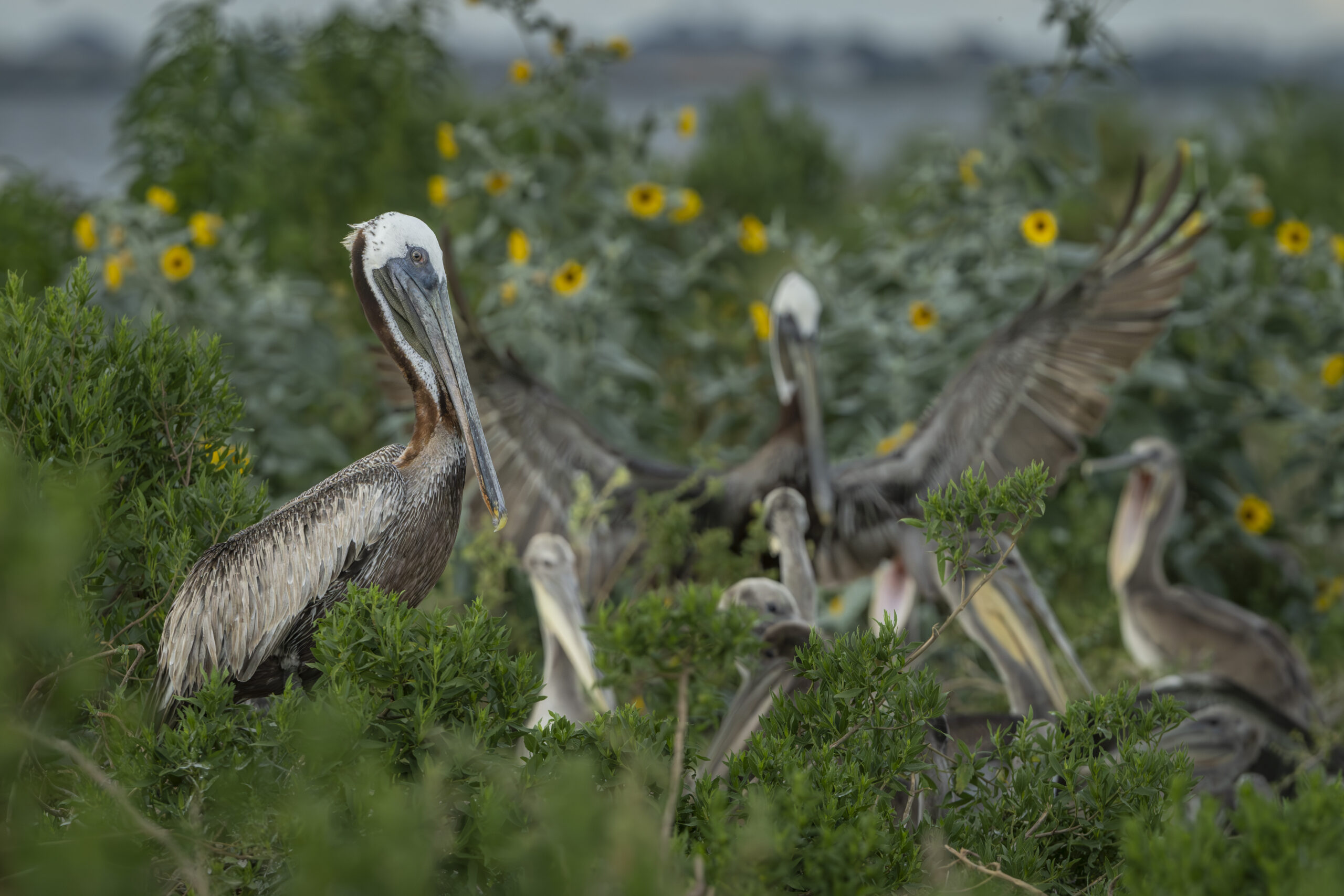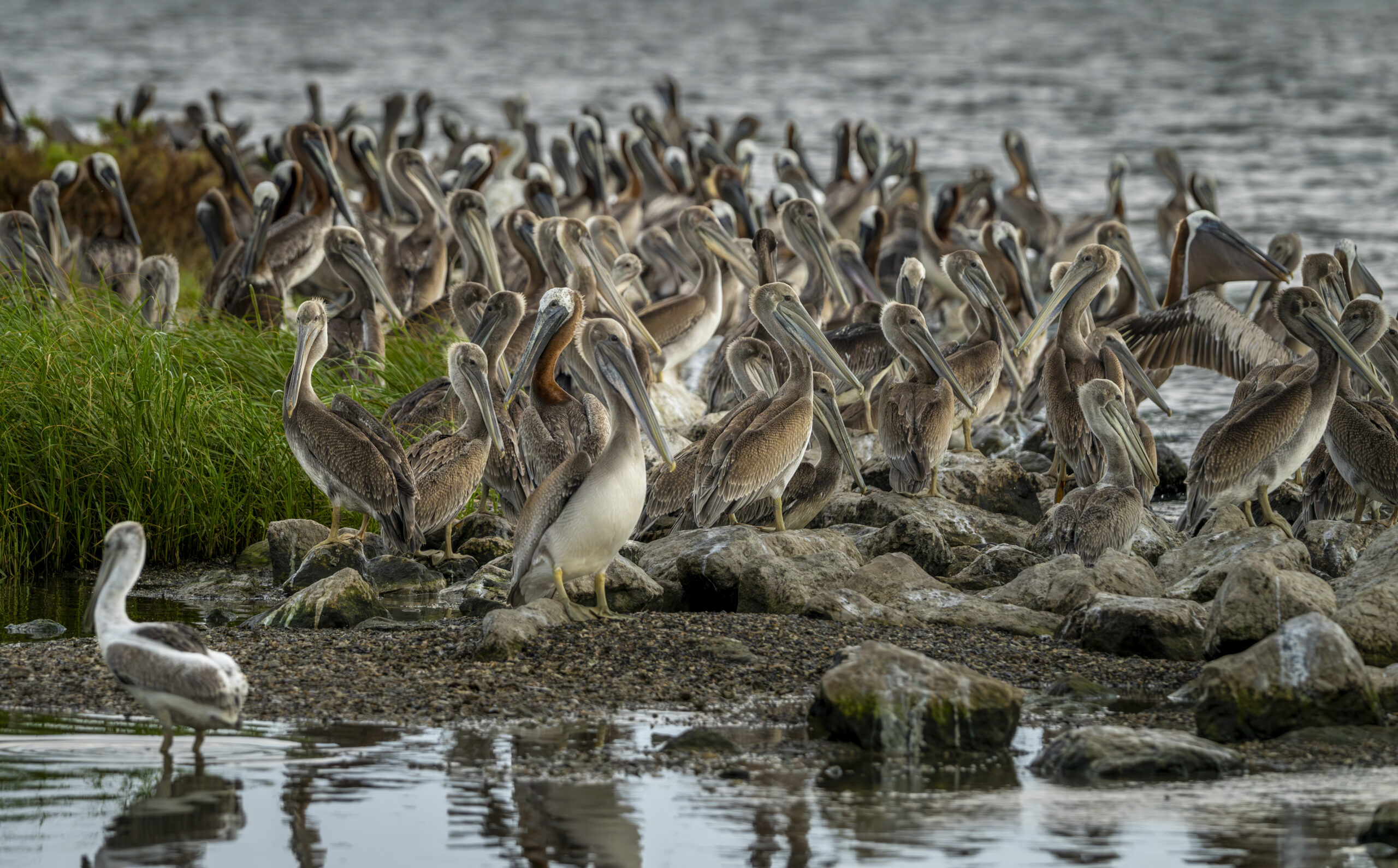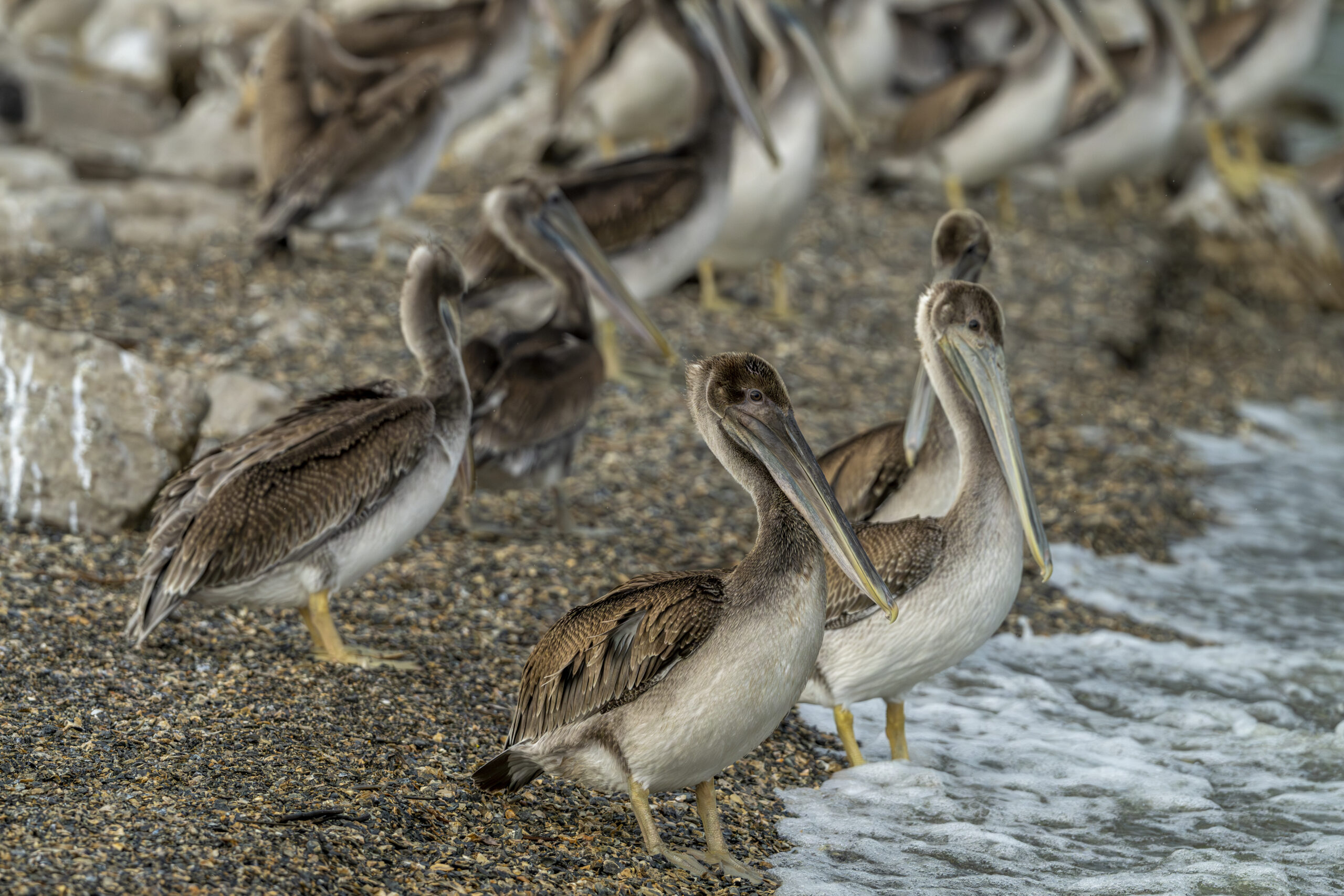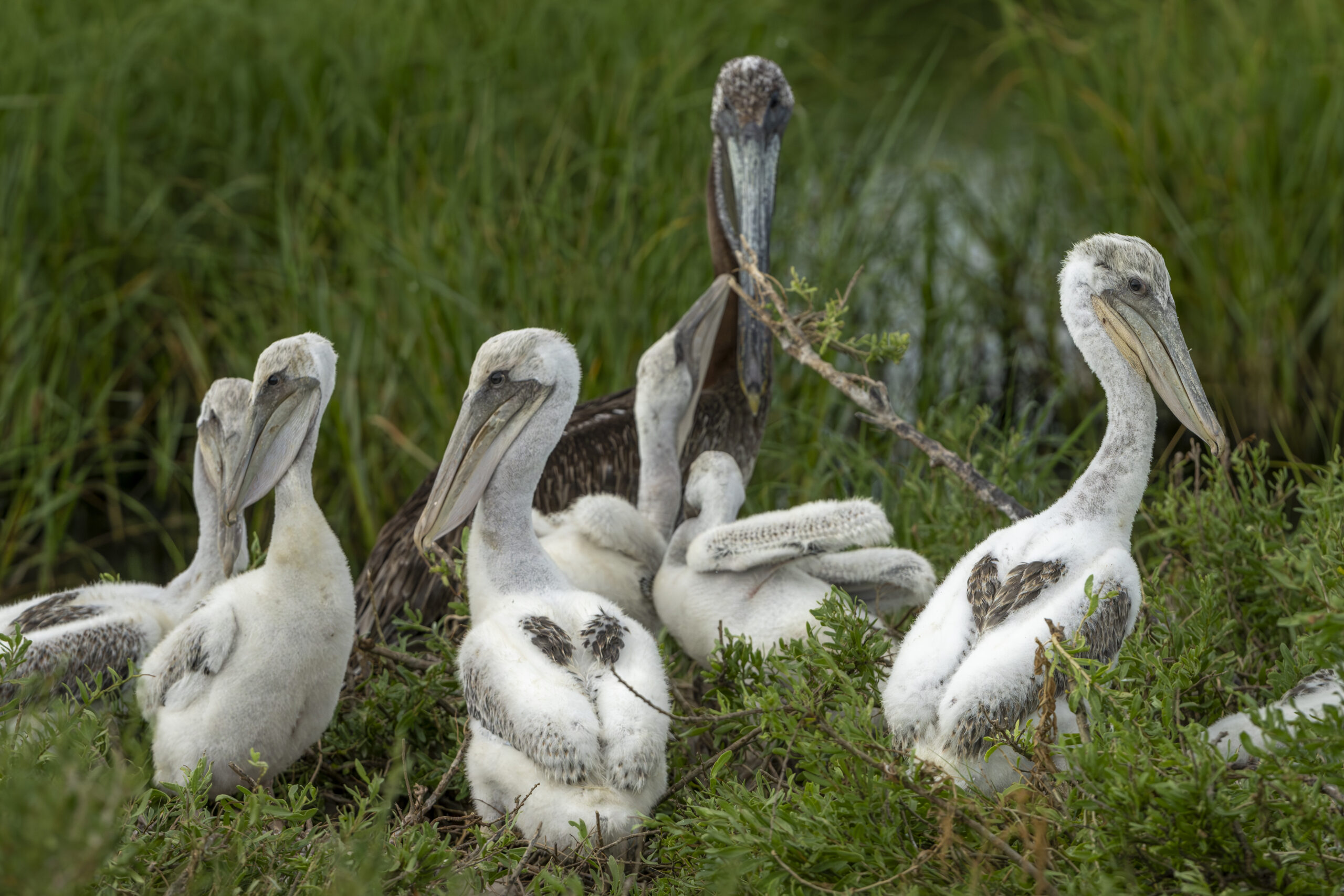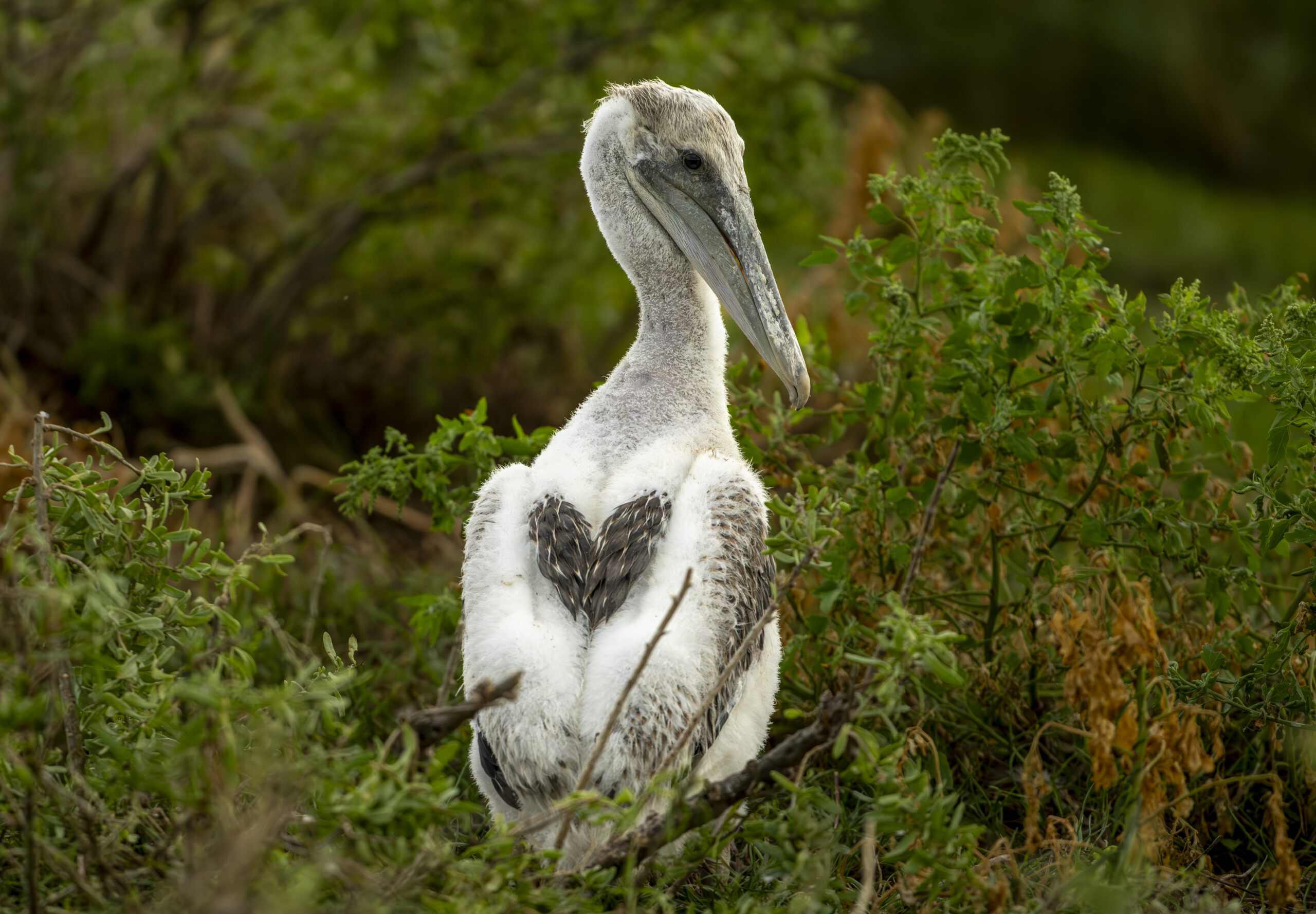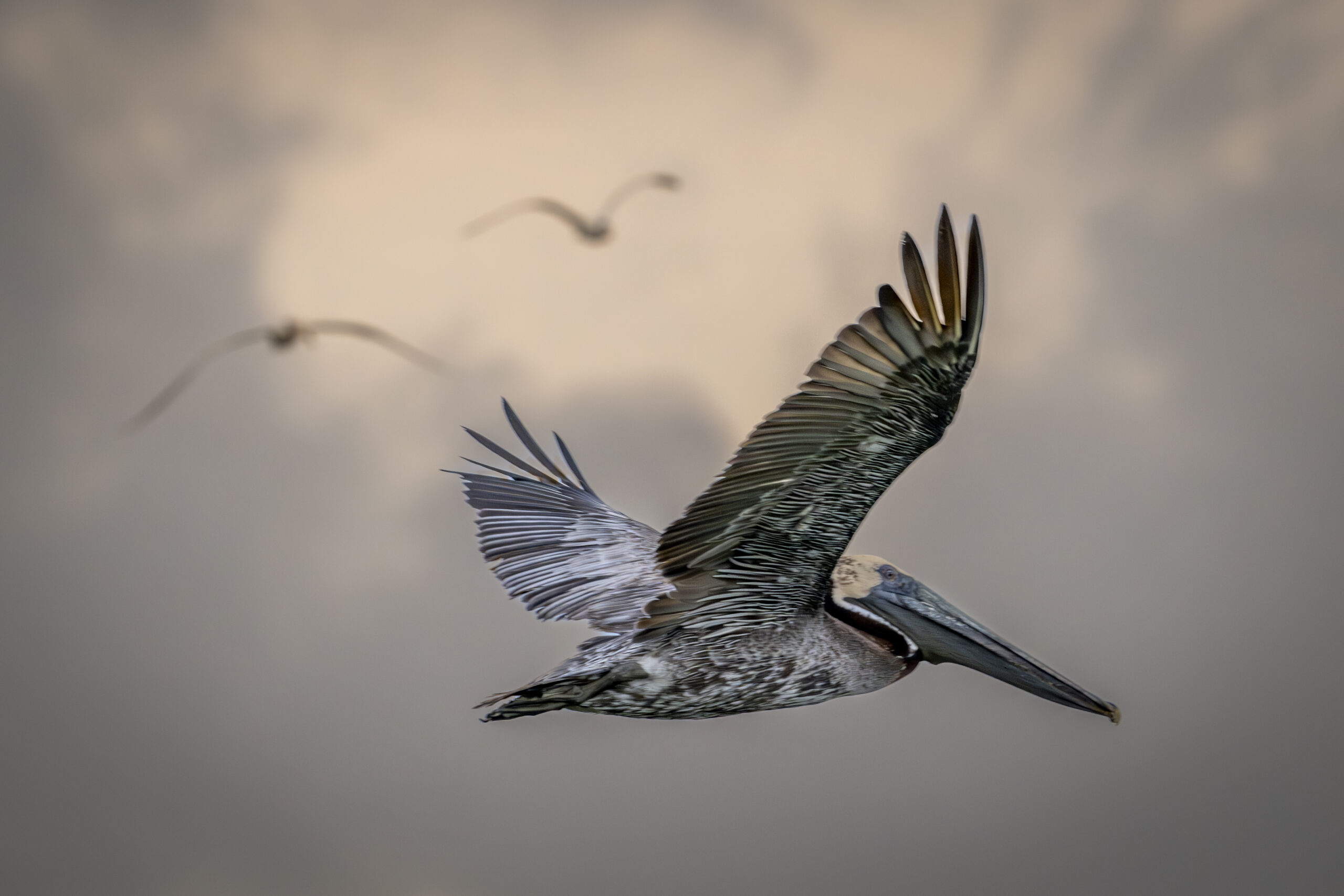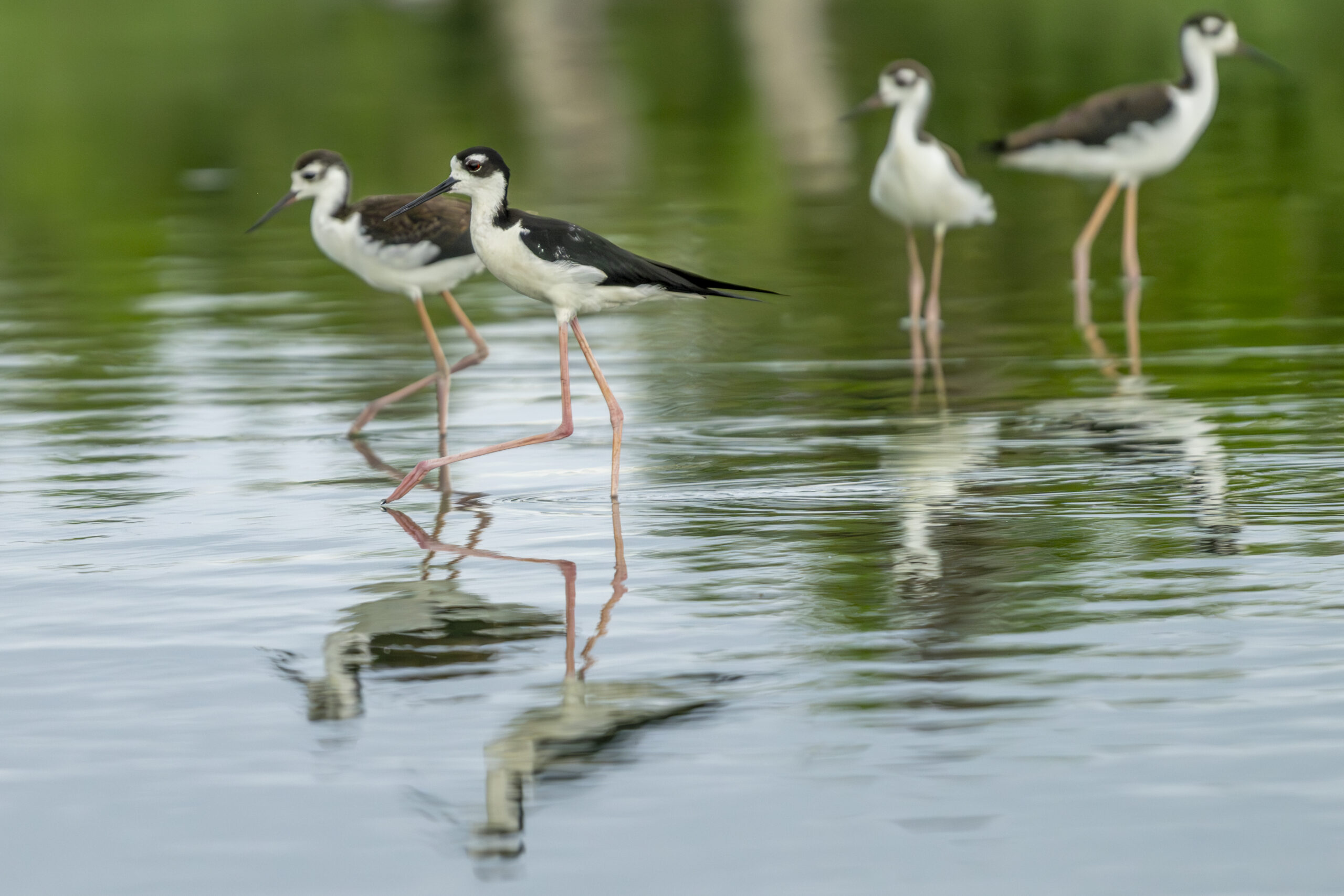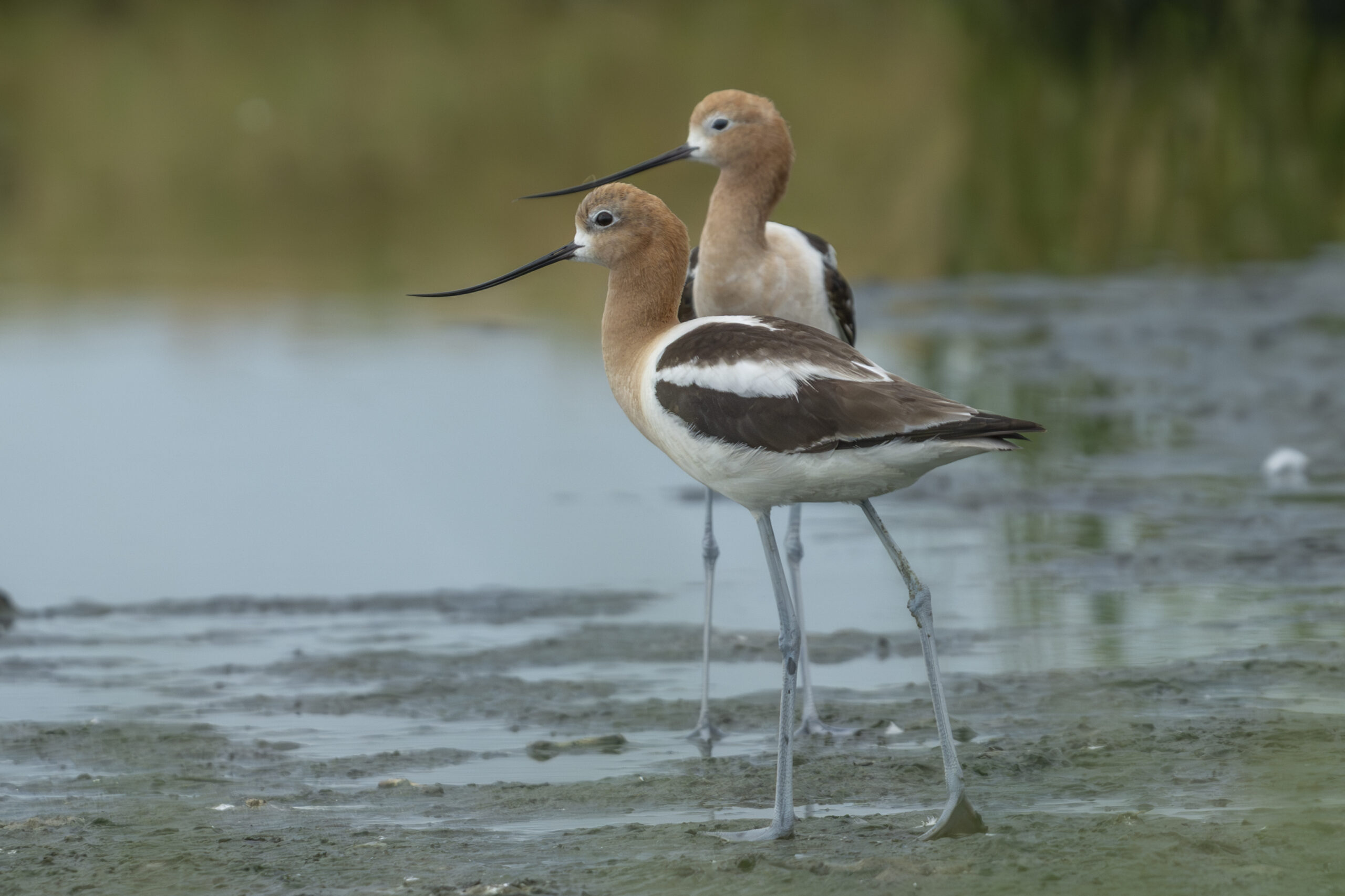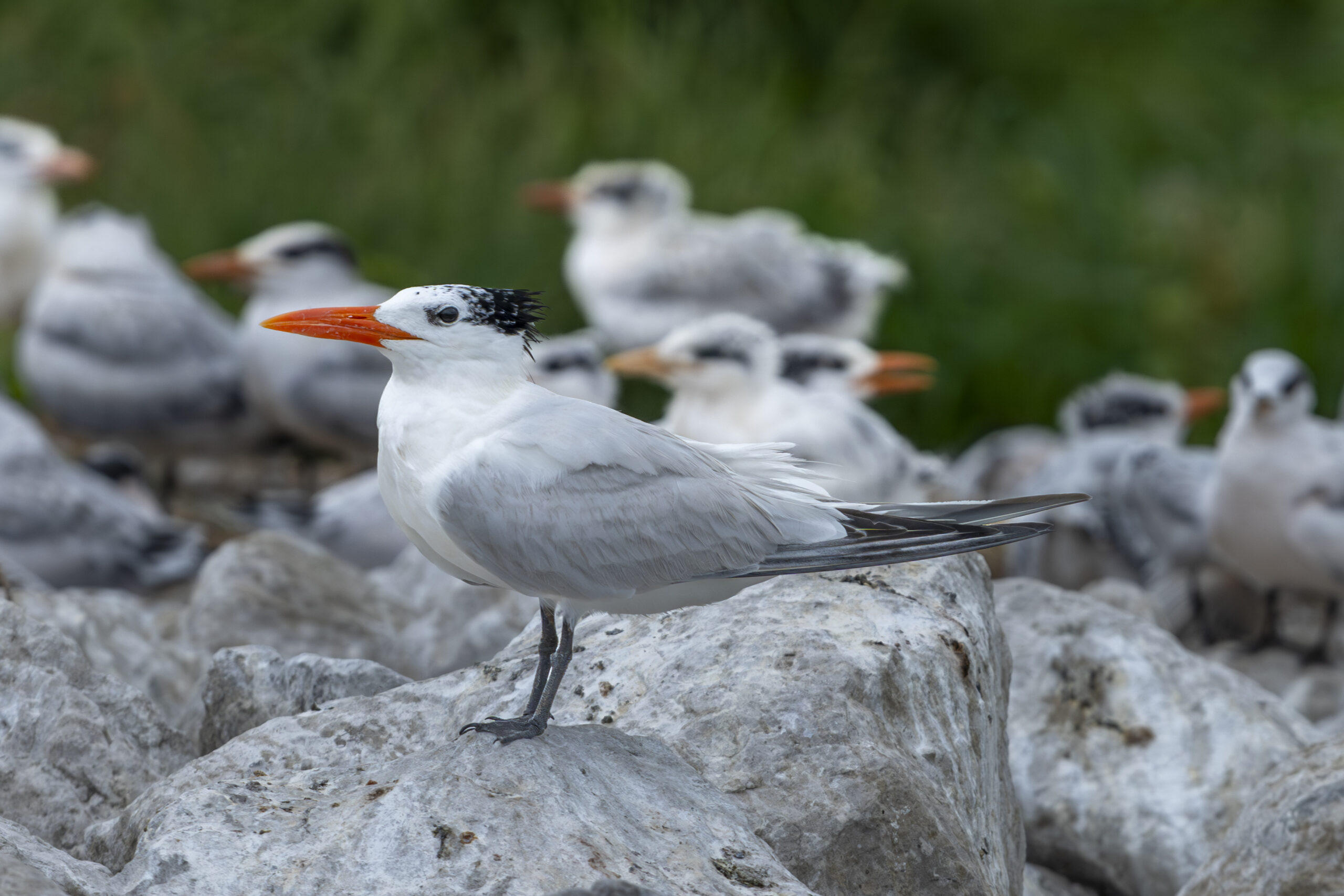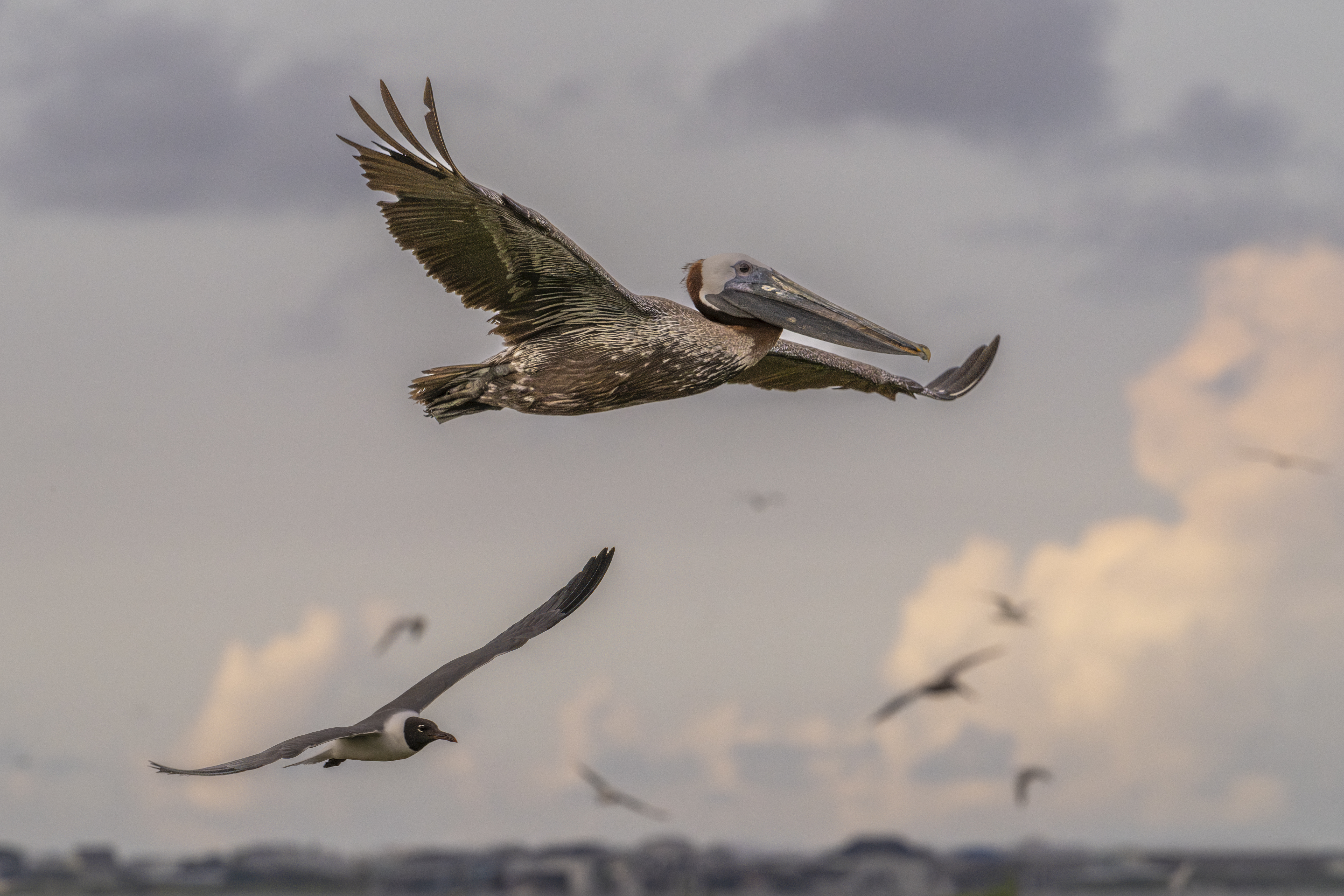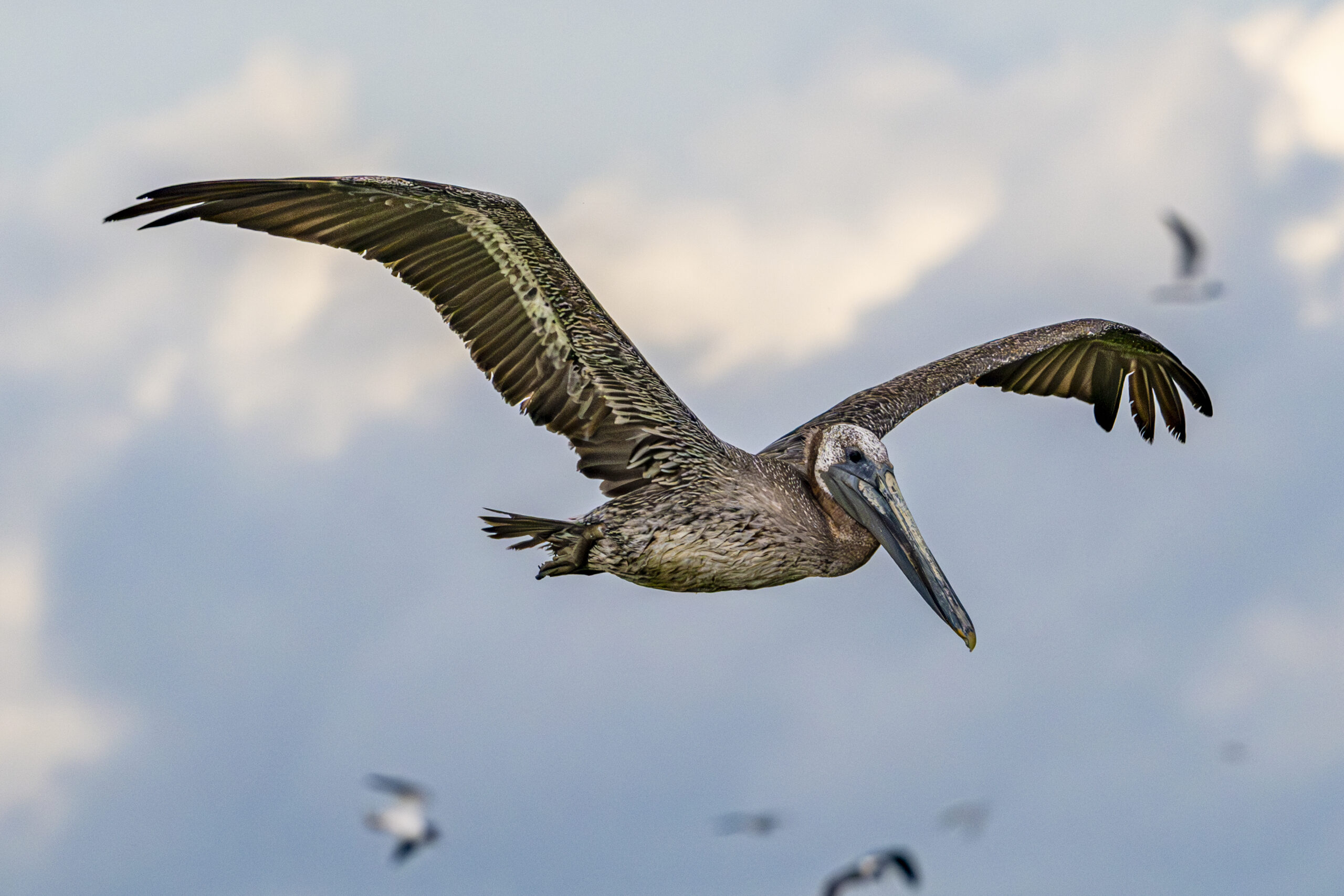Discover the Majesty of Queen Bess Island
Nestled near Grand Isle, Queen Bess Island stands out as a national treasure! This remarkable location hosts one of the largest brown pelican rookeries in Louisiana, contributing an impressive 15-20% of the state’s nesting activity. Beyond the brown pelicans, the island is home to a diverse array of bird species, including tri-colored herons, great egrets, and royal terns.
Queen Bess Island holds a special place in our hearts and history. It’s the site where Louisiana witnessed the remarkable comeback of the brown pelican—a species that faced near extinction in the 1960s. The thriving population of these magnificent birds is a testament to the success of dedicated conservation efforts.
Photo-Journalist Trip!
A huge thank you to Biologist Program Manager Jon Wiebe with the Louisiana Department of Wildlife and Fisheries for organizing this incredible trip. And a special shoutout to photographer Jackson Hill for capturing the island’s vibrant birdlife so beautifully. (All photos ©2024 Jackson Hill)
Exploring Queen Bess Island:
A Louisiana Gem!
We’re excited to share that over the next couple of months, we’ll be featuring stunning photos from Jackson Hill’s recent trip with Restore Grand Isle and the Louisiana Department of Wildlife and Fisheries. Stay tuned as we showcase the beauty and significance of one of Louisiana’s natural treasures: Queen Bess Island.
Restoration of Queen Bess Island
Photos by Jackson Hill
Queen Bess Island Photo Gallery
Jackson Hill: Photographer
Jackson Hill began his career as a staff photographer at the Mobile Press-Register and the Raleigh News & Observer. His “On Mobile Streets: a rumor of the city” a book of B&W street photography was published in 1978. Moving to New Orleans in 1980, Hill worked as an Associated Press stringer and BlackStar shooter before opening his commercial studio Southern Lights. Until retiring in 2020, Hill worked on assignment for various editorial and corporate clients in the U.S. and internationally. In 2013 his short film noir “The Dead Man’s Number” won a number of awards. He has since worked on several short films ranging from experimental film to social justice documentary work concentrating on prison reform with director Sara Gozalo. Along with his partner Linda Marshall Hill and his daughter painter Caroline Hill, Hill shoots wildlife as a passion focusing on Louisiana birds and alligators.

